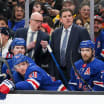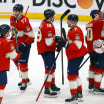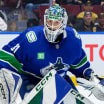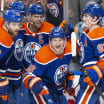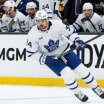The NHL and the National Hockey League Players' Association made major strides toward hockey becoming accessible and enjoyable in new and established markets by investing more than $14 million in numerous community impact programs and initiatives in the United States and Canada.
New records and standards were set during the 2023-24 regular season, with the League attracting an all-time single-season high of 22,560,634 fans through games Monday to break the mark of 22,436,532 set last season. Venues were filled to 97 percent capacity for the 32 NHL teams and special events held at Commonwealth Stadium in Edmonton, Avicii Arena in Stockholm, T-Mobile Park in Seattle and MetLife Stadium in East Rutherford, New Jersey.
Young boys and girls -- at least 40,000 -- tried hockey for the first time through the NHL/NHLPA Industry Growth Fund. Cultural celebration and awareness nights covered more than 30 unique themes to recognize heritage including Asian and Pacific Islander, Black history, Hispanic, Indigenous and Native American, Jewish, and Ukrainian.
"I'm so proud that we're now starting to see these returns," said Rob Knesaurek, NHL senior vice president, youth development and industry growth. "Our league being healthy and we're talking about it's been in the best place ever. We're seeing revenue grow. We're seeing more fans, buildings sold out. Us investing in a variety of things [important] to our clubs has really helped connect to new audiences, bringing them to our games, to watch, to buy [merchandise]."






